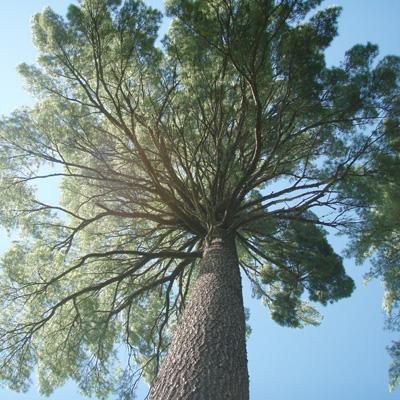Growth, Lumber Yields, and Financial Maturity of Archetype, Isolated Eastern White Pine Crop Trees

Eastern white pine is potentially a high-value species because of large market premiums for clear lumber, so financial return for harvesting white pine depends on forest management designed to develop high quality basal logs. Most woods grown pines are not of high value because of poor natural branch shedding and white pine weevil deformation. In old field monocultures, value depends on early manual pruning, but in mixed-species stands, competition from shade tolerant conifers (spruce, fire, hemlock) can accelerate branch shedding and minimize weevil attack, creating high quality logs without manual pruning.
Many spruce budworm era (1975-90) salvage harvests in the Northern Forest retained immature white pine reserve trees. NSRC researchers examined growth response of 77 isolated, released pines and determined their financial maturity at 8 sites throughout Maine’s Acadian spruce-fir region. They collected measurements on all trees from the ground and climbed 9 trees to obtain branch measurements. Researchers used computer modeling to forecast future tree growth and computerized sawmill simulation to estimate post-release standing tree values. They assessed financial performance of released pines in unpruned and hypothetical pruned scenarios.
Retaining isolated white pine trees at final harvest of other conifers in the Acadian forest enhances growth response and can be financially lucrative, especially if forest managers reserve younger pines (under 12 inches diameter) with vigorous crowns. Unpruned pines, on average, peaked in net present value 52 years post-release. The net benefit of pruning reached its maximum 30 years after pruning and stayed positive for 101 years, suggesting that early pruning is a viable practice for reserved pines.
Download printable version [PDF]
Download full final report [PDF]
